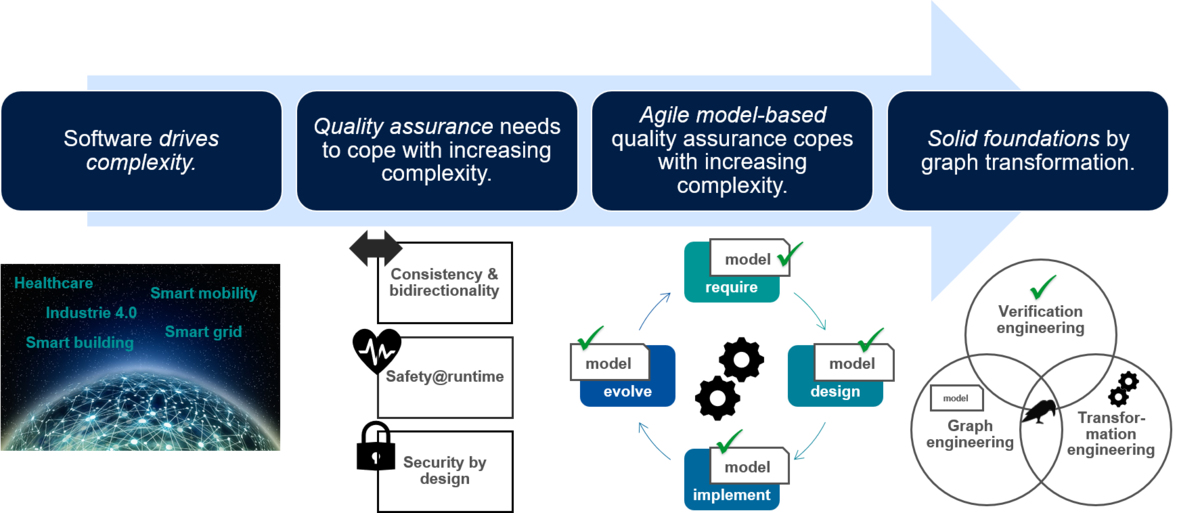
The Chair of Software Systems Engineering is located in the Institute of Computer Science at the faculty of Mathematics, Computer Science, Physics, Electrical Engineering and Information Technology (MINT) at the Brandenburg University of Technology Cottbus - Senftenberg. It was headed by Prof. Dr. rer. nat. Claus Lewerentz since its foundation in 1995 and it is continued under the direction of Prof. Dr. rer. nat. Leen Lambers since October 1, 2021.
Brief overview. Research and teaching of the staff employed at this chair are concerned with software engineering, i.e. with the planning and development of programs. Because the requirements that have to be met by programs cannot be assessed without examining conditions of the intended environment of use, we attach particular importance to a systems-oriented point of view: we do not regard the programs and program systems to be developed as isolated from their environment, but as components of more comprehensive systems consisting of technical components with their physical processes and people with their work organization.
Context. In the context of digitization, more and more functionality of systems is realized by software. Previously decoupled areas are nowadays interlinked by various types of software. Examples include web and mobile applications that integrate social networks, self-learning components, services for managing business processes, all the way to embedded software in self-driving vehicles and production systems of Industry 4.0. The range of systematic development techniques is consistently more needed and appreciated in order to keep track of the ever-growing complexity and size of modern software systems and their requirements on the one hand, and to enable cost-efficient development on the other. Moreover, with today's ubiquity of software, the explicit desire for high quality software is increasingly manifesting itself.
Chair profile. The construction of high-quality software & systems in the age of digitization requires a comprehensive approach. In model-based software development, we use models to represent and illuminate different aspects of a software system at an appropriate level of abstraction in each phase of the development process. By means of model transformations we can also systematically automate various types of model manipulations, e.g. model refactoring, model integration or model simulation, in order to standardize and accelerate the development process. Automated testing and analysis techniques for continuous quality assurance of software artifacts complete the picture. With these important prerequisites, we can adequately deal with the growing complexity and size of modern software systems and increase their overall quality.
Applications. Our techniques are applicable in various domains and applications. For example, we use them for the construction and quality assurance of adaptable service-oriented applications, automotive systems, flexible production systems, legacy modernizations, or social networking applications. As an ongoing core application area, we want to apply our techniques to the field of medical informatics. Especially in this area, many different types of software and systems have to be intertwined. In addition, different quality criteria must be systematically weighed against each other, built in and checked. Our research in the area of software architectures and automated testing and analysis fits these requirements perfectly. Therefore, we want to enable and support new applications including their quality assurance, especially in medical informatics, with our technical expertise in software engineering.
